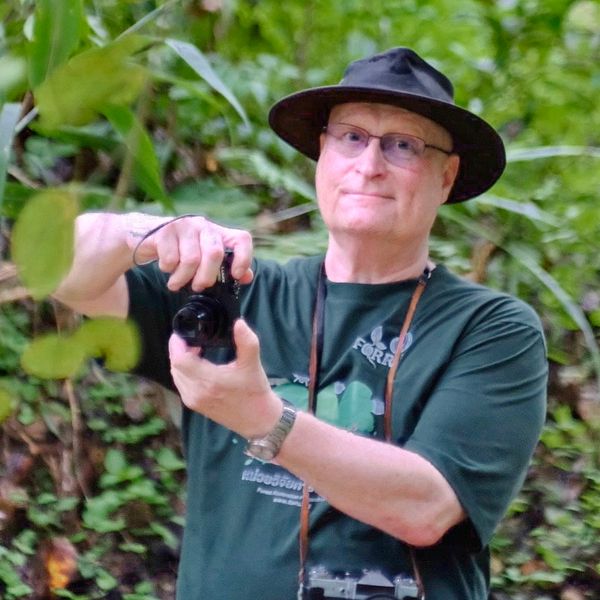
With global restoration commitments requiring investment of up to $1,670 billion over the next decade, the need for sustainable financing solutions has never been more urgent. Speakers highlighted how FLR could transform degraded landscapes into productive and ecologically resilient systems, which could yield impressive returns to investors. However, to realize this potential, entrenched barriers to investment must first be overcome.
Challenges to Funding FLR

Participants in the investment forum identified these key challenges:
- High Transaction Costs
Small projects face disproportionately high transaction costs relative to their size. These fixed expenses discourage investments in smaller, community-led initiatives that are essential to achieving FLR goals. - Limited Private Sector Participation
Structural challenges such as unclear land tenure, regulatory barriers and the lack of clear financial returns have kept private sector involvement low. Investors seek robust returns, but many FLR projects fail to outline viable profit models. - Community Exclusion
With less than 1.7 % of climate financing currently ending up in the pockets of small-holder farmers , equitable benefit-sharing mechanisms are long overdue, to ensure sustainability. - Complexity in Carbon and Biodiversity Markets
While carbon and biodiversity credits hold promise as revenue sources,
- Gaps in Technical Capacity
Governments and community organizations often lack the capacity to implement FLR projects using the latest science-based innovations — the need to adequately budget for capacity building was clear.
Innovative Pathways to Overcome Barriers
Speakers shared various ways to tackle these challenges. Some of the most commonly stated solutions included:
- Blended Finance Mechanisms
Integrating public, private and philanthropic funds can mitigate risks for investors and unlock larger capital flows. Instruments such as green bonds and biodiversity credits are being developed to tie restoration outcomes to market-based returns. 
Various web-based apps were presented to monitor restoration progress and even to enable "blockchain" payments to ensure transparent and equitable revenue distribution to smallholders. Community engagement was highlighted as a key driver of restoration success. For example, Rabobank’s Acorn Platform illustrated how digital tools and remote sensing can connect smallholders with global carbon markets, via local NGO's, ensuring trust and scalability.- Capacity Building and Training
Scaling up FLR requires investment in human capital. Training programs for local stakeholders, including technical and financial skills, were highlighted as critical to make restoration projects viable and impactful. - Policy and Governance Reforms
Streamlining land-tenure laws and incorporating FLR into national policies were seen as essential to create an enabling environment for investments. - Long-Term Sustainability Models
Designing projects with clear, diverse and adaptable revenue streams, blending agroforestry with non-timber forest products, eco-tourism, carbon income etc. ensures both environmental and economic viability over decades.
Projects seeking investment:
The forum provided an opportunity for proponents of 10 FLR projects from various Asian countries to pitch their proposals directly to potential investors including:
Bhutan: Rangeland Restoration
Karma Chorten Dendup, Forestry Officer, Bhutan’s Ministry of Forest and Park Services, presented a project targeting 400,000 acres of degraded rangelands. Activities include erosion control, invasive species removal, water management and prescribed burning. The project aims to support 5,000 households, improve ecosystem services and enhance livelihoods through sustainable rangeland management.
Lao PDR: Mixed-Species Plantations
Soukphavanh Sawathvong, Deputy Head of Planning, Lao Department of Forest, outlined a project to restore 10,000 hectares of degraded land with mixed-species plantations, to enhance biodiversity, carbon storage and livelihoods, via community nurseries and carbon trading. Potential outcomes include non-timber product income, ecosystem recovery and carbon credits.

Chhun Delux, Cambodia Forestry Administration, highlighted a Mekong initiative to enhance sustainable supply chains for coffee, tea and non-timber forest products. Targeting 5,000 smallholders, the project seeks to increase incomes, facilitate fair market access and foster environmental stewardship. Activities include capacity building, fair trade certification and stakeholder collaboration, with scalability across the region.
Timor-Leste: Transboundary Agroforestry
Catur Basuki Setyawan, Indonesia’s Forestry Ministry and Adelino Do Rojario, Timor-Leste Forestry Directorate, proposed restoring the Talau-Loes watershed with agroforestry. The $13 million project combines bamboo and fruit trees to rehabilitate land, build community capacity and enhance cross-border collaboration to achieve both economic and ecological resilience.
Key Takeaways
- Leverage Blended Finance: Encourage partnerships between governments, private investors, and philanthropic donors to reduce risks and attract funding.
- Prioritize Local Benefits: Empower smallholders and local communities through equitable benefit-sharing systems.
- Invest in Capacity Building: Equip stakeholders with technical, financial and management skills and knowledge bases.
- Innovate Carbon and Biodiversity Markets: Develop robust valuation methodologies and frameworks, to unlock the potential of emerging credit markets.
Conclusion
The RESULT Asia-Pacific Investment Forum underscored the monumental task of restoring forest to 100 million hectares of degraded land by 2030. It also shone a light on the immense opportunities available, if stakeholders can overcome financial and technical hurdles. With the right innovations, investments and networks, FLR could become a cornerstone of a sustainable future in the Asia-Pacific Region. 
For more information, please contact RESULT Asia-Pacific at [email protected]
Stephen Elliott 15/12/24


